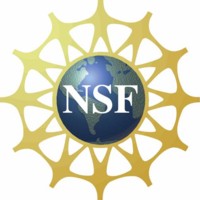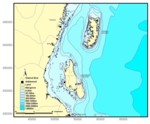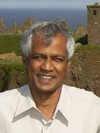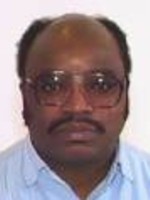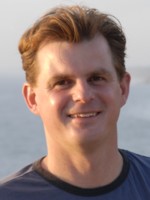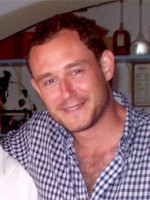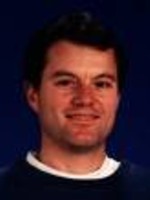Intergovernmental Oceanographic Commission
National Science Foundation
Institute of Marine Sciences, Zanzibar
Theiss Research, La Jolla, CA
This is the old Zanzibar Project web site.
Please visit the new one at: www.ZanzibarProject.org
Home | East African Coast mailing list | Progress | Gabriela Mayorga Adame
Zanzibar Channel Project: Home
Abstract
The Zanzibar Channel Project is a collaboration between the Intergovernmental Oceanographic Commission (IOC), the Institute of Marine Sciences (IMS) in Zanzibar and Theiss Research in La Jolla, California. It is mainly funded by Theiss Research with a grant from the National Science Foundation (NSF) of the United Sates. The objective is to send a US-based coastal modeler to IMS in Zanzibar for three month to help develop coastal modeling capabilities using ROMS and ADCIRC and thus also to strengthen US - East African collaborations in oceanography. Future plans beyond this pilot project are already being developed.
During workshops in the East African region, arranged by to IOC, coastal modeling was named one of the priorities of the oceanographic institutions in the region. Another series of workshops in the region in March 2007, also arranged by the IOC, introduced coastal modeling to the oceanographic institutions, including IMS in Zanzibar. This has prepared the ground for Gabriela Mayorga-Adame, the US-based coastal modeler selected for the project, to help set up ROMS and ADCIRC and to carry out a first study of pollutant transport. She is visiting IMS in Zanzibar from April 17 to July 22, 2007. An Advisory Committee will help guide this effort. IMS in Zanzibar is planning a workshop for oceanographic institutes in the region so that Mrs. Mayorga-Adame can present the field of coastal modeling to them.
Plans for follow-up projects are already being made and most suitable programs from which funding could be sought are offered by NSF and the Carnegie Foundation of New York.
Contact: Jurgen Theiss, j.theiss@theissresearch.org
Links: Intergovernmental Oceanographic Commission (IOC), National Science Foundation (NSF), Institute of Marine Sciences (IMS), Theiss Research, ROMS, ADCIRC, general information on Zanzibar
Acknowledgment and Disclaimer: This material is based upon work supported by the National Science Foundation under Grant No. 0550658. Any opinions, findings, and conclusions or recommendations expressed in this material are those of the author(s) and do not necessarily reflect the views of the National Science Foundation.
Internal: restricted access (If you forgot login and/or password please email j.theiss@theissresearch.org)
Further details are given below on:
 Background
Background
 Zanzibar Channel
Zanzibar Channel
 Benefits to the coastal modeler
Benefits to the coastal modeler
 People
People
 Advisory Committee
Advisory Committee
 Project Outline
Project Outline
Background
The Intergovernmental Oceanographic Commission (IOC) successfully brought together IMS and Theiss Research, which is funded by the National Science Foundation (NSF). The respective interests of these four partners are perfectly matched by the Zanzibar Channel Project. One of IOC's interest is supporting capacity building at oceanographic institutions in the developing world. IMS would like to develop coastal modeling capabilities in order to study the dynamics of the Zanzibar Channel. Its prime interest is the dispersion of pollution from Zanzibar and Dar es Salaam. A secondary interest, which might be beyond the immediate scope of this project, is in beach erosion. Theiss Research is funded by the National Science Foundation (NSF) to give a young physical oceanographer from an institution in the United States the opportunity to experience and contribute to oceanographic research in East Africa. Thus sending a coastal modeler from the United States to IMS to help build their capacity in coastal modeling serves the interests of all four partners. Support for this project has therefore been and will continue to be strong.
The choice of using ROMS and ADCIRC has been the result of lengthy discussions between IOC, IMS, NSF, and Theiss Research. On the one hand, a coastal model was sought that is widely used by the physical oceanography community in the United States because this project has United States partners and is intended to be in the field of physical oceanography. On the other hand, oceanographic institutions in developing countries mainly use coastal models typically used by the ocean engineering community in the United States. This is because these institutions primarily advice their governments, which have begun to trust results from coastal ocean engineering models like MIKE21, DELFT3D, and ADCIRC. It was eventually decided to use ROMS because it is considered the most sophisticated coastal model, is mainly developed and widely used by the physical oceanography community in the United States, and also enjoys a large and supportive worldwide developer and user community. Since this is a very forward looking but unconventional step for IMS to take it was also decided to use ADCIRC, which should not represent much additional effort as any coastal modeler working with ROMS can quickly learn how to use ADCIRC.
Although the Zanzibar Channel Project is comparatively small it has already generated surprisingly great interest and support. The IOC, mainly involved in truly global programs, has spent much time to help develop the project and even its Executive Director was informed about it and expressed his personal support. At IMS, the project is being developed by the director himself with much dedication. Furthermore, very prominent oceanographers agreed to volunteer to serve on the advisory committee. This strong interest and support highly motivates us to use this project as a base to develop further projects later that would contribute to fruitful long-term United States - East African collaborations in oceanography. It is therefore hoped that the coastal modeler will have an interest in contributing to developing new projects and to raise funding for them, for instance, from the Office of International Science and Engineering at NSF or from foundations like the Carnegie Corporation of New York.
Zanzibar Channel
The Zanzibar Channel separates Zanzibar Island from the mainland of Tanzania. Its bathymetry is shown in the figure on the left (click on the figure to see larger version). The regional winds are dominated by the monsoon changing from south easterly to north easterly every six months. Also of importance are interseasonal oscillations of these regional winds. QuikSCAT winds appear to be the obvious choice to force ROMS. However, they are only valid offshore of about 50km and might need to be modify due to local island and coastal effects. All the various data sets needed to run the model are generally already available and IMS is ready to collect additional data if they are required. Discussions on required data sets should start immediately after a coastal modeler is selected so that IMS can make sure all the required data sets will be available once the coastal modeler arrives at IMS. It is also worth mentioning that advisory committee member Chris Reason is involved in the implementation of the Agulhas Somali Current Large Marine Ecosystem (LME) project. He and his group are currently producing several simulations using ROMS to model the tropical Western Indian Ocean (from about 23S to 5N and from the East African Coast to 80E and in some cases to Australia) to investigate the sensitivity of the thermocline ridge north of Madagascar to wind forcing. All these simulations include the Zanzibar Channel and could thus possibly provide boundary conditions for this project.
Benefits to the coastal modeler
The Zanzibar Channel Project represents several concrete benefits to the young coastal modeler. One clear aim of the project is to publish a paper on this first study of the dynamics of the Zanzibar Channel and the coastal modeler is in a central position to play an important role in this effort. The Office of International Science and Engineering at NSF has repeatedly pointed out their interest in seeing that United States scientists and engineers become involved in international collaborations, especially with countries that have not been traditional partners. This is particularly important in the field of oceanography, which is by its very nature truly global. Zanzibar Island/Tanzania is a non-traditional partner and thus collaborating with IMS can give the coastal modeler a competitive edge when applying for NSF funding in the future. Interest in this project is great among scientists, engineers, NSF and IOC officials and the project's advisory committee features prominent oceanographers. Great visibility of the coastal modeler's work is thus guaranteed, which will be of benefit when the coastal modeler will apply for a position in the future.
People
Advisory Committee
Project outline
Before Zanzibar visit
A fast laptop will be purchased by IMS soon after a coastal modeler will have been selected. The coastal modeler can then install ROMS, ADCIRC, and all other necessary software well in advance of his/her visit to Zanzibar. Advisory committee member Emanuele Di Lorenzo generously offers to assist with the installation, configuration and any other technical issues regarding ROMS. He even offers to invite the coastal modeler to visit him at the Georgia Institute of Technology, Atlanta, GA to better assist in installing and configuring ROMS.
The coastal modeler will be invited by Jurgen Theiss to La Jolla, CA in order to discuss the project. This will also be an opportunity for the coastal modeler to give a seminar and to visit coastal oceanographers, in particular advisory committee member Clint Winant, at the nearby Scripps Institution of Oceanography.
During Zanzibar visit
The main task during the visit to IMS will be to continue configuring ROMS and ADCIRC for the Zanzibar Channel on the laptop, which will remain at IMS after the visit, and to train local researchers on using ROMS and ADCIRC. The candidate will also make the two models operational on one or two computers at IMS. As a first application IMS is interested in studying the dispersion of pollution in the Zanzibar Channel produced mainly by Zanzibar and Dar es Salaam.
IMS would like to share the benefits of the visit of the coastal modeler with other oceanographic institutions in the East African region. It is therefore suggested to organize a workshop so that the coastal modeler can present the field of coastal modeling.
After Zanzibar visit
If this project proves successful and the coastal modeler is motivated to help develop new projects within a United States - East African co-operation in oceanography, he/she would be an ideal partner. Funding could be sought from the Office of International Science and Engineering at NSF or from foundations like the Carnegie Corporation of New York.

